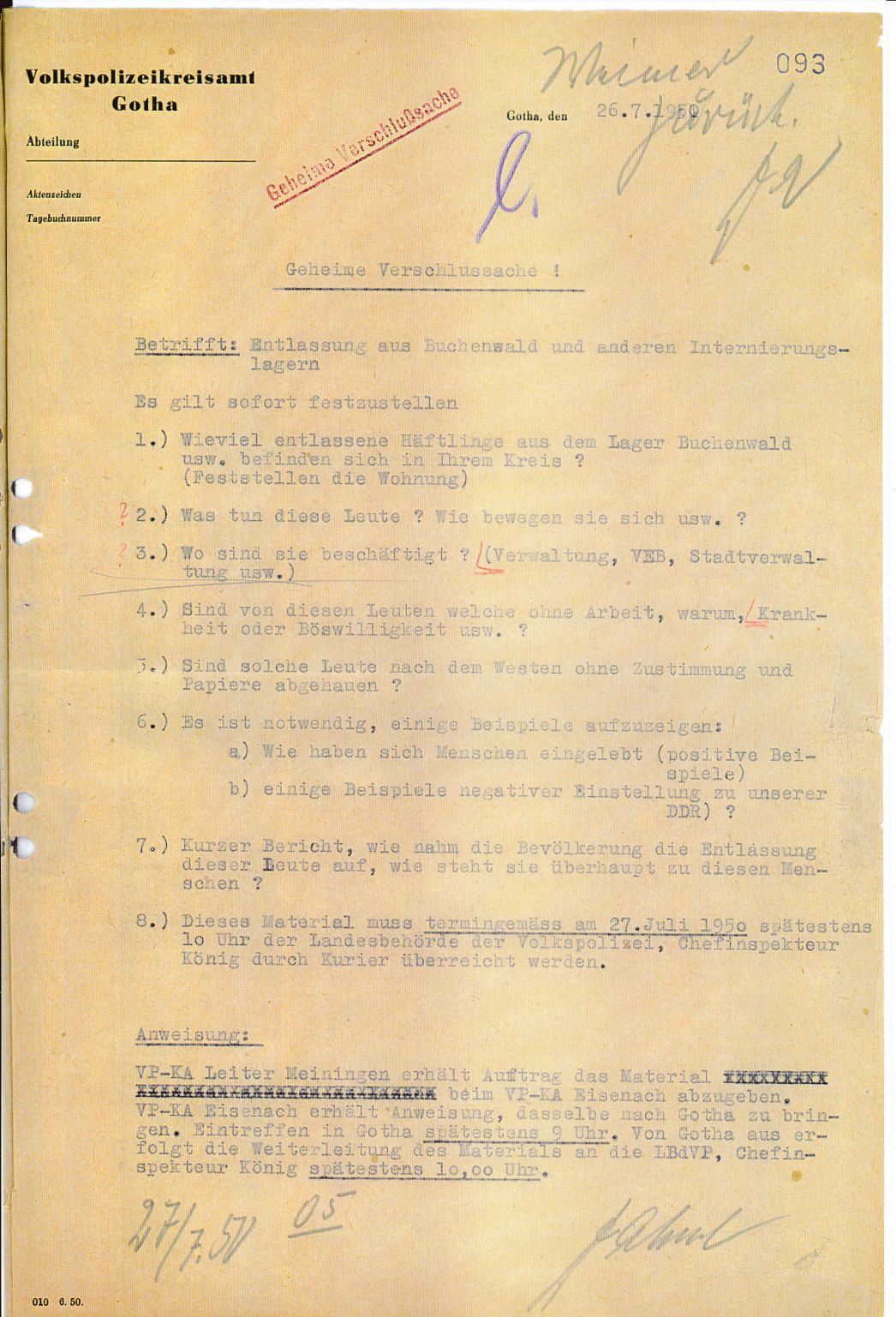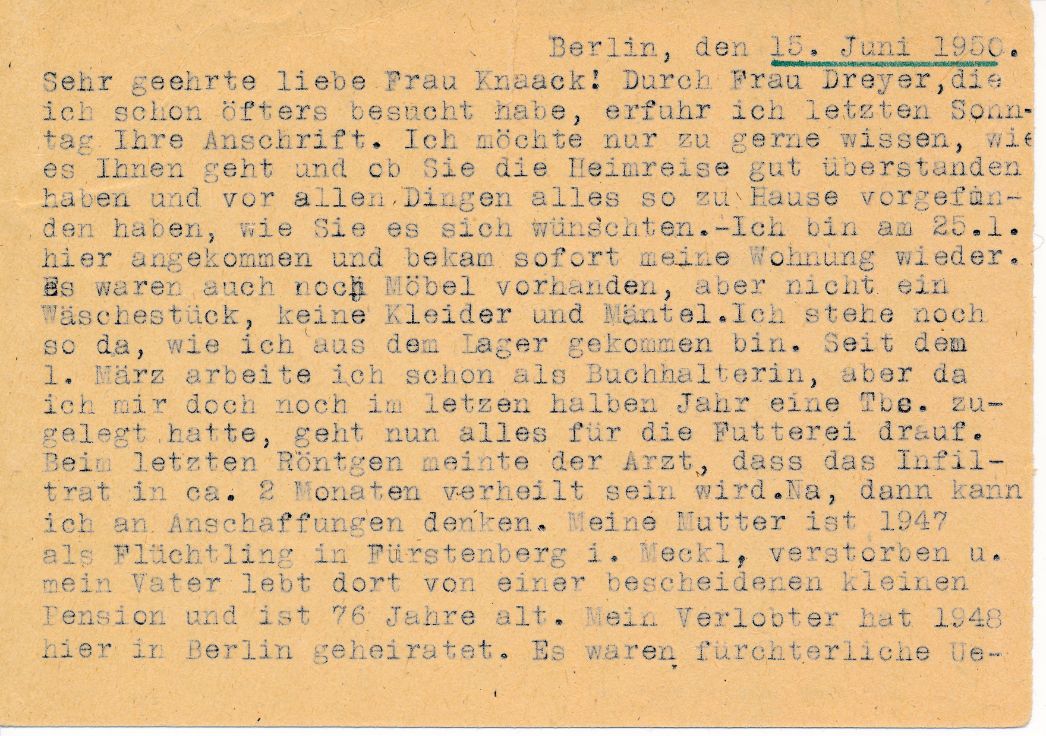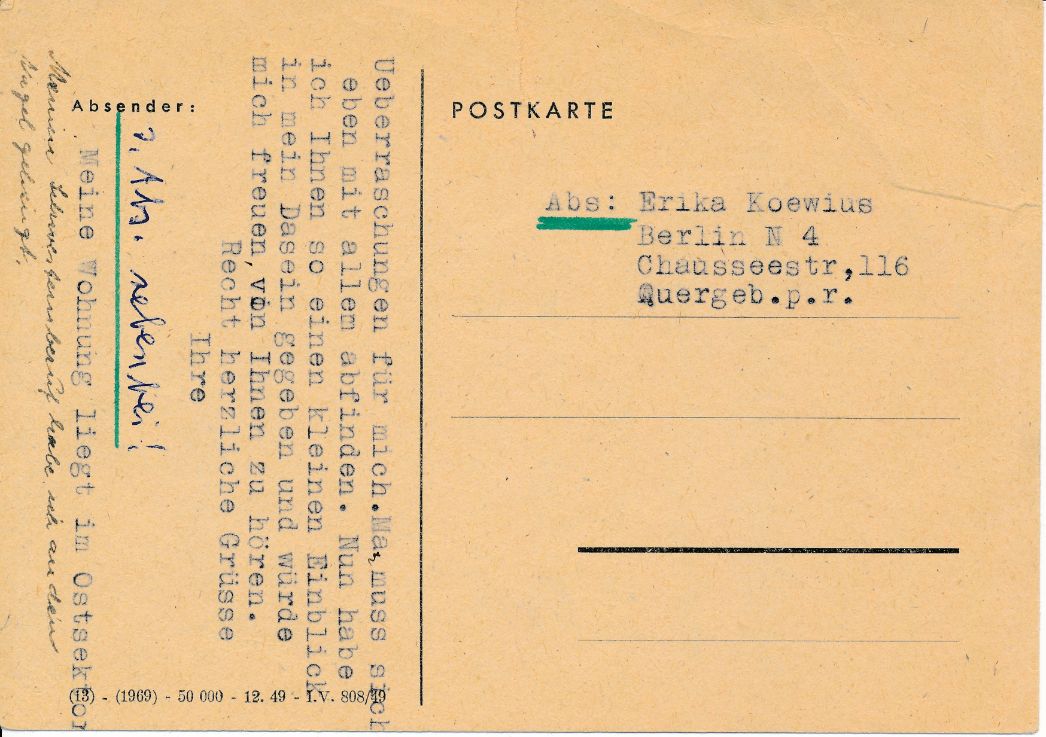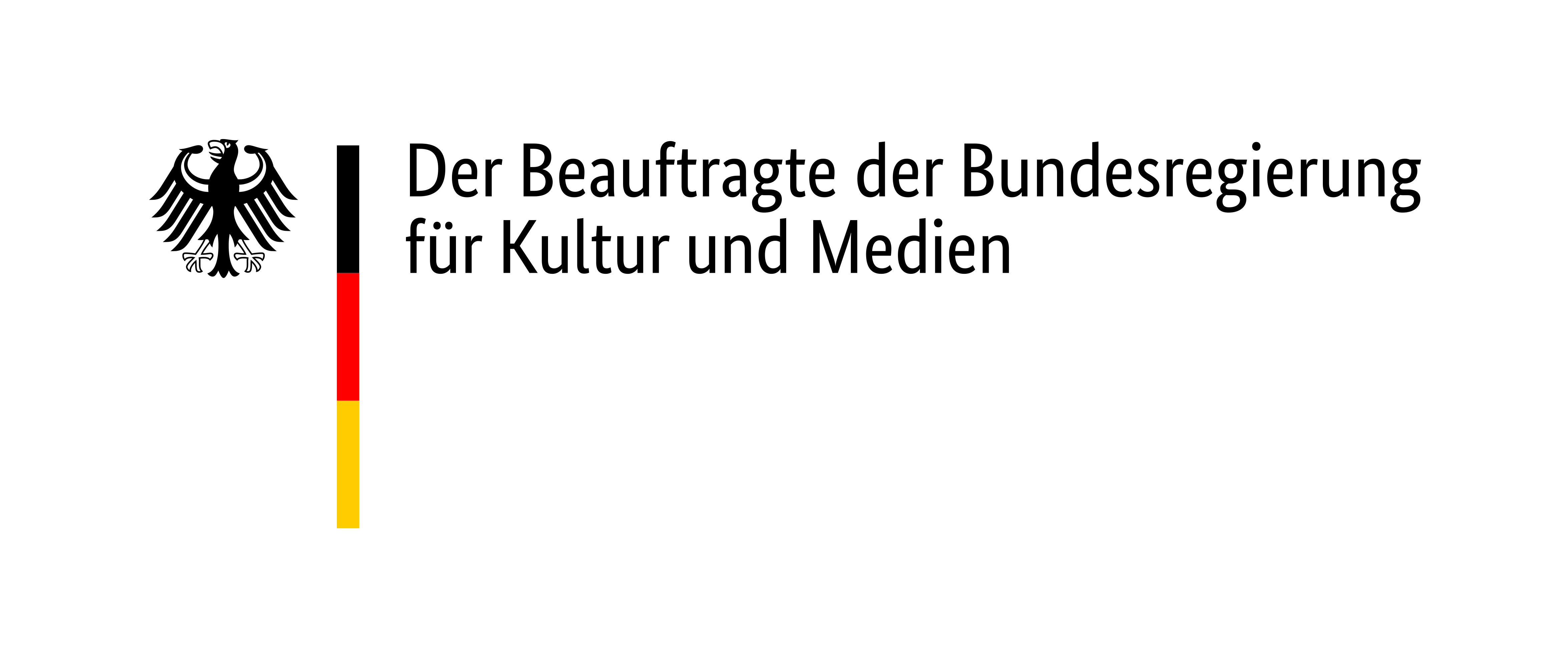In 1948 and 1950, the Soviet occupying power released internees from the special camps. The releases were part of a political realignment following the official conclusion of denazification in the Soviet Occupation Zone.
Initially, releases were only granted in exceptional cases; usually for health reasons. In 1948, the Soviet occupying power released over 9,000 prisoners from the Special Camp No. 2 in Buchenwald as part of a proclaimed end to denazification. At the beginning of 1950, the camp was finally dissolved. A total of 7,073 people were released, while 2,415 prisoners were handed over to the ‘Volkspolizei’ (People's Police). The dissolution of the special camps initiated the integration of less incriminated former Nazi officials into GDR society. However, they remained under control; their lives were marked by ongoing uncertainty.
By 15 February 1950, Buchenwald had been cleared except for a small rear guard, which left the site in March 1950. The site was initially used by the Soviet Army and handed over to the GDR on 21 December 1951.

The GDR wanted to use the releases for propaganda purposes. Only selected journalists were allowed to report from Buchenwald, Sachsenhausen and Bautzen. Both pictures are staged. However, while the photo on the right shows actual internees being released, the one on the left is presumably of extras. The names in the caption cannot be found in the camp registry either.

After the dissolution of the Buchenwald Special Camp in 1950, many former inmates remained under strict state control. This secret document from the People's Police District Office in Gotha demonstrates how those released were systematically monitored and recorded by the People's Police and the Ministry for State Security (MfS). In addition to their living situation and professional activities, a particular focus was placed on their political views.


In the letter to her former fellow inmate, Erika Koewius describes the difficulties of reintegration after her release.

